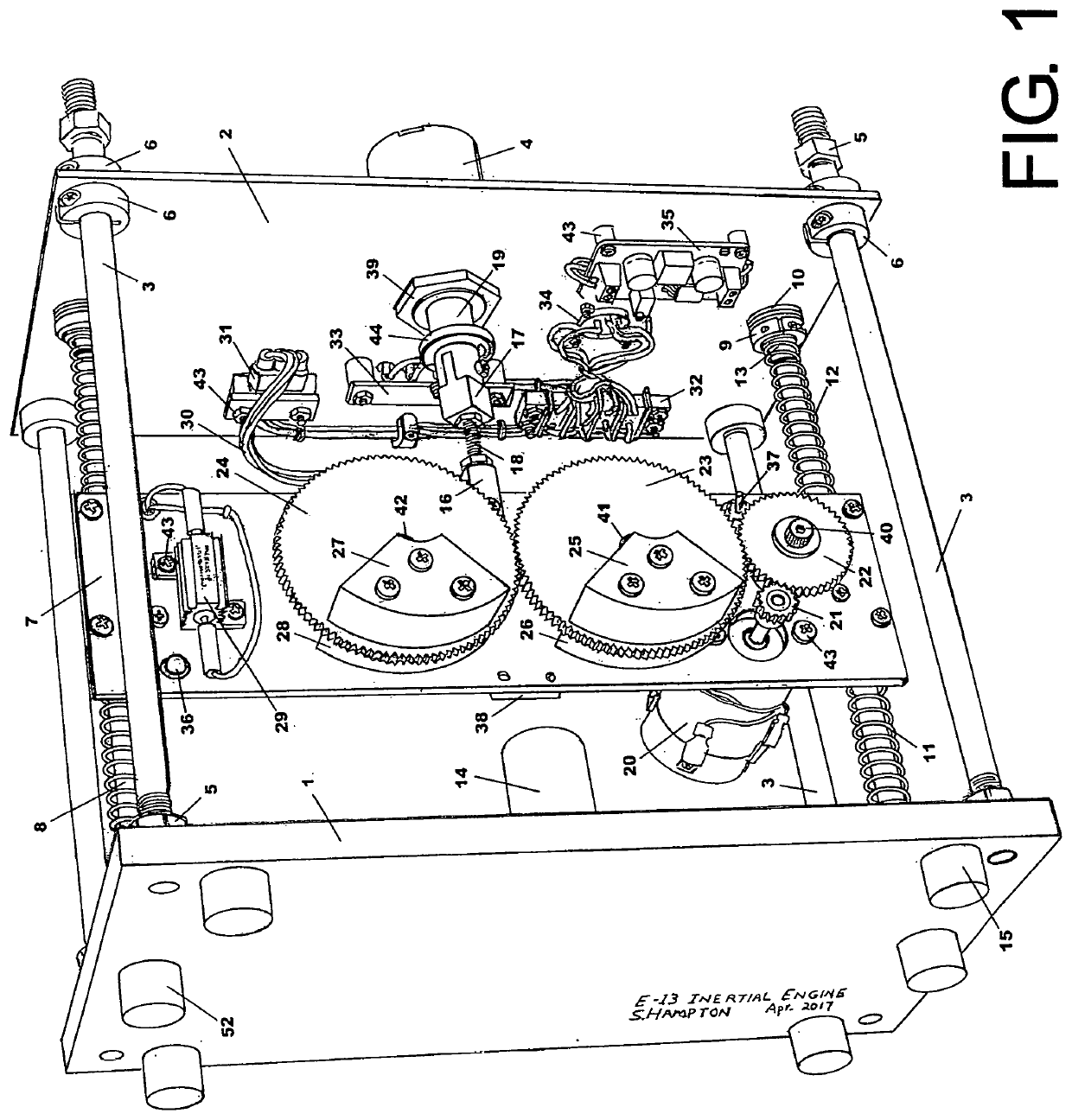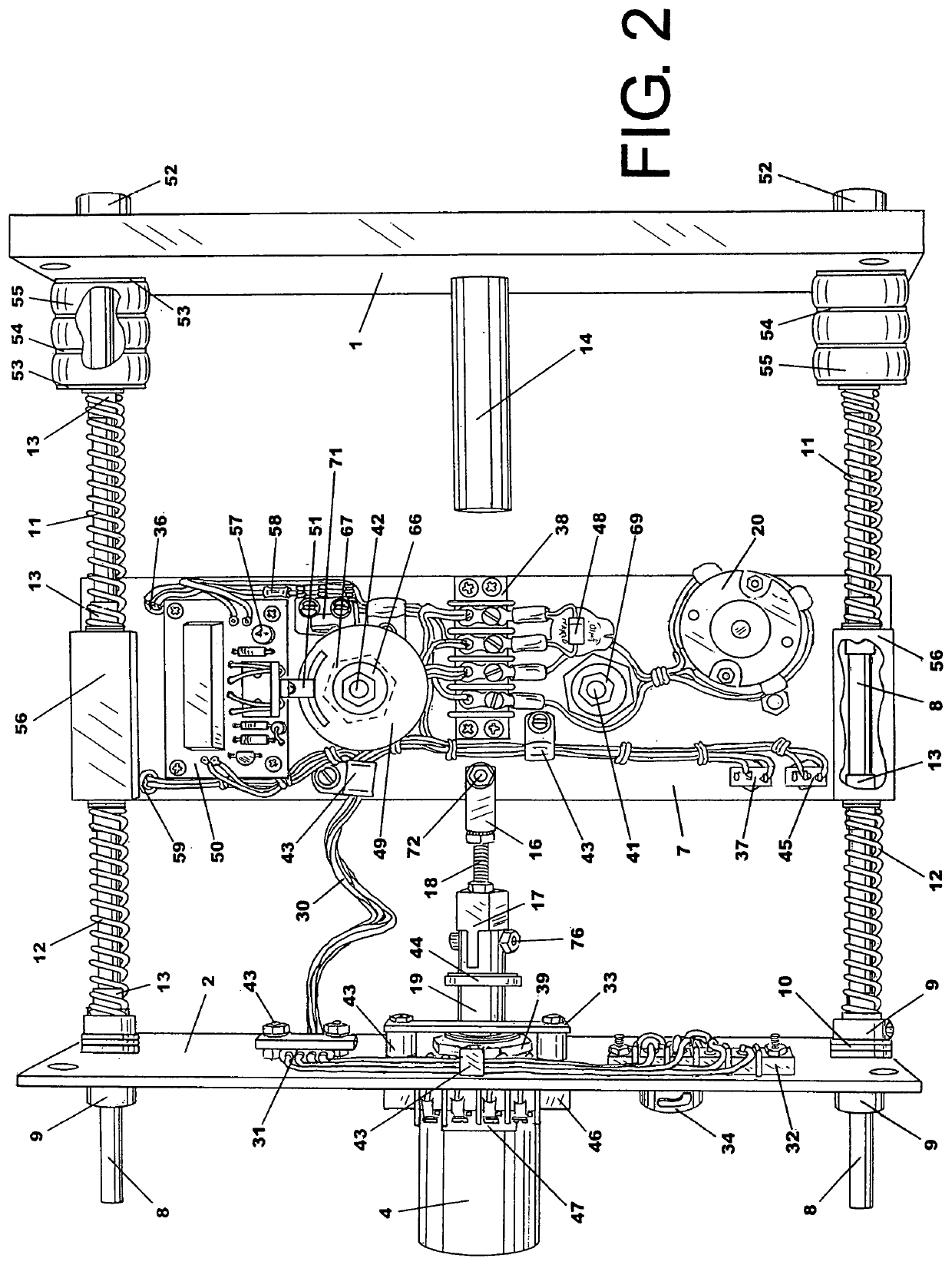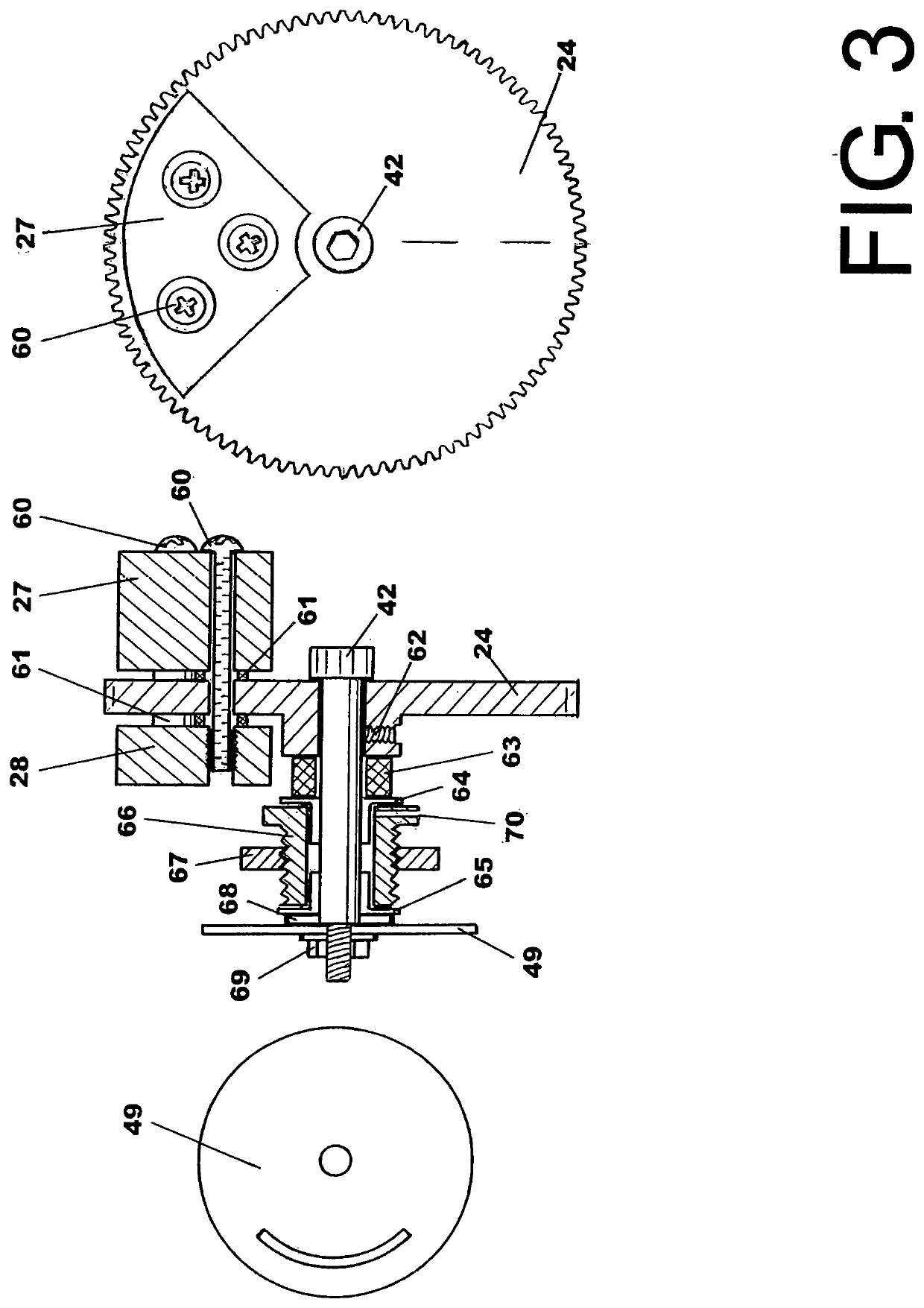Asymmetrical impulse drive
a technology of impulse drive and asymmetrical force, which is applied in the direction of instruments, machines/engines, cosmonautic vehicles, etc., can solve the problems of inability to exert substantial and significant linear force to be useful as a drive apparatus, complicated art devices, and further reduce their efficiency, so as to achieve the effect of reducing maintenance costs, reducing maintenance costs, and reducing machining costs
- Summary
- Abstract
- Description
- Claims
- Application Information
AI Technical Summary
Benefits of technology
Problems solved by technology
Method used
Image
Examples
Embodiment Construction
[0034]In FIG. 1, the mainframe assembly comprises of a base plate 1 at left joined to a thrust plate 2 far right by a plurality of mainframe support stanchion rods, straps, angled rails, or plates 3. The mainframe stanchions 3 may also hold an additional cover plate above the thrust plate 2 to offer protection to the solenoid 4 coil and its housing. Solenoid 4 may also be heat-sinked to the thrust plate with heat sink compound or radial heat sink fins. In the illustrated example, the mainframe stanchions 3 that join base plate 1 and the thrust plate 2 may employ fastening devices such as threaded nuts 5, rod clamps 6 or other means to secure the assembly. The use of stanchions 3 give the apparatus strength, durability and allows for easy stroke distance adjustments and disassembly for maintenance or repair.
[0035]The carriage 7 (at center) is suspended by a plurality of glide rods 8 that are secured to the thrust plate 2 by means of rod clamps 9 (far lower right) or other such fasten...
PUM
 Login to View More
Login to View More Abstract
Description
Claims
Application Information
 Login to View More
Login to View More - R&D
- Intellectual Property
- Life Sciences
- Materials
- Tech Scout
- Unparalleled Data Quality
- Higher Quality Content
- 60% Fewer Hallucinations
Browse by: Latest US Patents, China's latest patents, Technical Efficacy Thesaurus, Application Domain, Technology Topic, Popular Technical Reports.
© 2025 PatSnap. All rights reserved.Legal|Privacy policy|Modern Slavery Act Transparency Statement|Sitemap|About US| Contact US: help@patsnap.com



